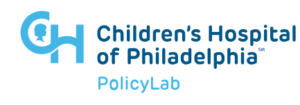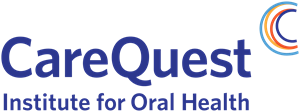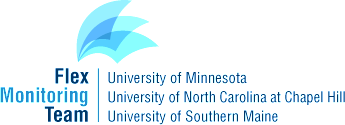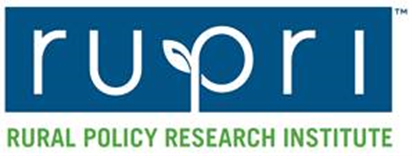The Journal of the American Medical Association Health Forum published a study from the University of Minnesota, which was based entirely on quantitative analysis of UDS and OPAIS (HRSA 340B) data. The article concluded that as FQHCs’ 340B savings increase, they serve a growing number of “total, uninsured and privately insured patient volume, as well as… low-income, unhoused and non–English-speaking populations.” FQHCs also provide “increased provision of health services that aren’t especially profitable for the facilities, but considered valuable preventative care measures, such as tobacco cessation counseling and HIV tests”.
New Toolkit Available on Talking to Workers, Understanding the Economy

Building trust. Removing bias. Empowering people to share their experiences.
These are just three things that come from using community-engaged research practices. They are also among the reasons why the Federal Reserve chose these methods to look beyond the numbers to understand the experiences and motivations of workers without a four-year degree in a post-pandemic labor market.
A new toolkit offers insights on using community-engaged research principles gleaned from the Worker Voices Project and shows how others can use them in their own work.
CDC Study Released on Delayed Oral Health Care and Diabetes

The Centers for Disease Control and Prevention (CDC) published a new study showing that adults with diabetes are more likely to delay oral health care due to cost than adults without diabetes. This is the first study to provide national prevalence estimates of delayed oral health care due to cost among people with diabetes, and the first to describe the risk factors for delayed oral health care among people with diabetes. The study found that approximately 1 in 6 people with diabetes delay oral health care due to cost.
New Brief: The Role of Child Care in Family-centered Approaches to Treatment for Substance Use Disorder

Amid a persistent maternal mortality crisis in the United States, substance use is one of the most pronounced issues facing those who have recently given birth and other caregivers in Pennsylvania.
Interviews PolicyLab conducted with key stakeholders and caregivers in recovery across the Commonwealth, along with data and research by state and national entities, highlight the ways absence of quality child care prevents parents from accessing substance use treatment.
A new PolicyLab issue brief looks at how improving outcomes for pregnant and parenting individuals with substance use disorder (SUD) requires serving the whole family unit, explores the impact access to quality child care can have on a parent’s ability to access and sustain SUD treatment, and outlines potential ways to improve policy and practice.
While this resource presents a case study of this issue in Pennsylvania, the takeaways may be broadly applicable to other states seeking to build systems connections and support for caregivers in recovery.
New Release: State of Oral Health Equity in America 2024
 The CareQuest Institute for Oral Health just released key findings from their annual survey, “State of Oral Health Equity in America” and includes perceptions, attitudes, and experiences with oral health from more than 9,000 adults in the United States. Among other findings, the survey found that “adults with less than a high school education were nine times more likely to report seeking dental care through an emergency department than those with a postgraduate or professional degree.” A comprehensive report with additional findings will be released soon.
The CareQuest Institute for Oral Health just released key findings from their annual survey, “State of Oral Health Equity in America” and includes perceptions, attitudes, and experiences with oral health from more than 9,000 adults in the United States. Among other findings, the survey found that “adults with less than a high school education were nine times more likely to report seeking dental care through an emergency department than those with a postgraduate or professional degree.” A comprehensive report with additional findings will be released soon.
New Rural Hospital Workforce Toolkit Published

The Flex Monitoring Team (FMT) has released a new product, the Workforce Toolkit to Support Critical Access Hospitals and Rural Providers. This toolkit provides background on health care workforce challenges in the U.S., describes common workforce challenges faced by Critical Access Hospitals (CAHs), and provides examples and links to external resources that CAHs may use to address their own workforce needs and enhance recruitment and retention.
The toolkit includes five modules, which each discuss key workforce challenges and resources by topic. These include an introductory module that summarizes broad challenges in the rural health care workforce as well as modules on organizational culture and leadership, leveraging partnerships, emergency medical services workforce, and administrative and support staff workforce.
2023 ACS 1-Year Estimates Released

The latest research brief highlights key findings from the 2023 American Community Survey (ACS) 1-Year Estimates. This report provides updates on Pennsylvania’s demographic, social, and economic trends, covering topics such as household income, housing, educational attainment, and internet access. Additionally, the brief discusses changes in housing burdens across different racial and ethnic groups.
Just Published! Trauma-Informed Care: The Role of Dental Hygienists
 Children and adults with a trauma history are more likely to have poor oral health and increased dental care-related fear and anxiety.
Children and adults with a trauma history are more likely to have poor oral health and increased dental care-related fear and anxiety.
An article from the CareQuest Institute for Oral Health was recently published in the Journal of Dental Hygiene. “Trauma-Informed Care in Oral Health Care: The Role of Dental Hygienists,” examines the critical role of dental hygienists to ensure patients feel heard and make them feel comfortable enough to return for regular dental care.
Health Policy Institute Publishes Dental Education Map
The American Dental Association Health Policy Institute (HPI) developed a map based on data from the Commission on Dental Accreditation’s 2022-2023 Survey of Dental Education. The map includes profile information of each accredited DDS/DMD program in the United States.
New Report Released: Financial Performance of Rural and Urban Hospitals in Medicare Shared Savings Program

Financial Performance of Rural and Urban Hospitals in the Medicare Shared Savings Program
Huang Huang, PhD; Xi Zhu, PhD; Fred Ullrich, BA; A. Clinton MacKinney, MD, MS; Keith Mueller, PhD
This brief presents financial performance trends of hospitals who participated in Medicare’s Shared Savings Program (SSP) from 2011 to 2018. Trends in six financial outcomes are compared between SSP and non-SSP hospitals over time and between rural and urban hospitals.
Key Findings:
- Hospitals participating in the SSP had, on average, higher outpatient revenue, higher inpatient revenue, higher net patient revenue, higher operating margins, lower inpatient revenue share, and higher Medicare revenue share at the baseline year 2011 and throughout the study period.
- Compared to their respective non-SSP counterparts, rural SSP hospitals experienced a higher percentage increase in outpatient revenue than urban SSP hospitals.
- Rural hospitals participating in SSP experienced higher increases in inpatient revenue and net patient revenue than rural hospitals not participating in SSP. In contrast, urban hospitals participating in SSP experienced lower increases in these measures than urban hospitals not participating in SSP.
Access the report here.
Additional Report:
- Impact of Medicare Shared Savings Program Participation on Hospital Financial Performance: An Event-Study Analysis – (2022) Health Services Research, 58(1); 116-127.
Contact Information:
Keith J. Mueller, PhD; keith-mueller@uiowa.edu
Director, RUPRI Center for Rural Health Policy Analysis
University of Iowa College of Public Health
Office: 1.319.384.3832
